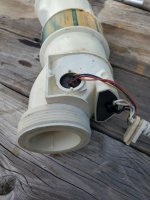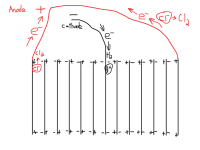I am not sure why you are opposed to troubleshooting the cell because it is not operating within normal conditions.
Have you tested the cell at a pool store? Many pool stores have the test equipment to test cell itself. Do not rule this out until you have had the cell actually tested.
Also, there is a solder joint on the Hayward SWG boards that typically goes bad and when it does, it creates higher resistance than normal which in turn reduces the current through the cell and the displayed salt is lower than normal. So this is another area that could be looked into to solve this issue.
Also, do you understand how a Salt/TDS meter works? It measures the water conductivity (µS/cm from volts, amps, water temperature) and then calculates the salt level using a conversion factor (e.g. 0.5).

www.instrumentchoice.com.au
It is exactly the same way the T-15 & control unit determines salt level. However, the cell plates are used as the sensors and not separate probes. So it is not like the temperature sensor which can be replaced with another temperature sensor or a resistor. The SWG plates are part of the salt measurement.
The unit uses shunt resistors to measure the current via a voltage across the shunt resistor. Theoretically, one could modify the board so that the unit shows higher amps and higher salt level that it would normally by increasing the resistance of the shunt resistor. However, this is not without issues. First, it would require modification of the board and second it would reduce both the current and voltage in the cell itself although the SWG display may show higher current & salt levels. The effect would be a reduction in CL production of the cell.
Another option is that you could put a high powered resistor across the power leads to the SWG cell which would increase the current draw from the SWG controller and it should then read higher amps and higher salt level as well.
But both of these solutions are not really solutions but are putting a band aid on a bleeding artery. You really need to find out what the problem is first or you could possibly cause more damage to the unit and in the end cost more to repair.














